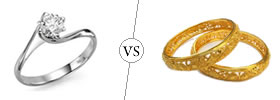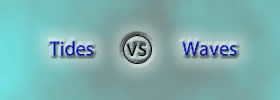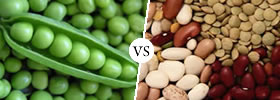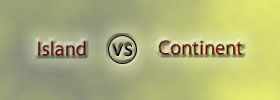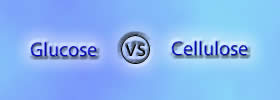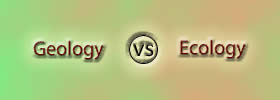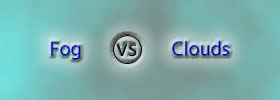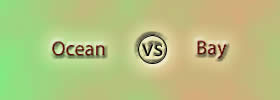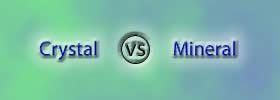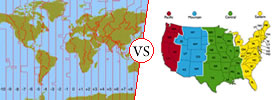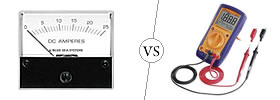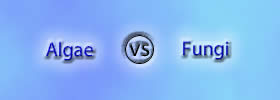Science & Mathematics
|
White Gold is white in color and is plated with rhodium, in order to make it appear brighter and more silver in appearance. Yellow Gold is yellow in color and lacks the hardness of white gold. |
|
Tides are the rise and fall of sea level that is caused by the gravitational pull of the moon and the sun on the Earth. Waves are actually energy that moves across the surface of the water. In the scientific community, this is more commonly known as wind waves as these waves are generated by wind. |
|
Nephrologists deal with disorders of the kidney. Urologists are surgeons who deal with disorders of the urinary tract. |
|
Beans are pods or seeds of large plant from the several genera of the family Fabaceae (also known as Leguminosae). Though according to the English language, ‘bean’ also refers to some other seeds or organs (pods), which make a similitude with leguminasae seeds or pods. Peas are a type of beans and the name is most commonly used to refer to the small spherical seed or the seed-pod of the pod fruit Pisum sativum. Peapods are botanically considered as a fruit, but are most commonly considered as vegetables in cooking. |
|
Merriam-Webster Dictionary defines an island as, “a tract of land surrounded by water and smaller than a continent.” The Myth of Continents: a Critique of Metageography states, “Continents are understood to be large, continuous, discrete masses of land, ideally separated by expanses of water.” Continents are also defined due to its placement and that they sit on continental lithosphere which is part of tectonic plates floating high on Earth's molten mantle. |
|
The term “glucose” is derived from the Greek, “glukus”, meaning “sweet”. Glucose is also known as D-glucose, dextrose, or grape sugar is found in plants and it is a byproduct of photosynthesis and fuels for cellular respiration. Glucose is used as energy by living organisms. On the other hand, cellulose is a polysaccharide that is produced by bonding glucose units together. Cellulose is most commonly found in the cell walls of green plants and algae. Cellulose is used a dietary fiber for humans. |
|
Geology is the scientific study of solid Earth, though it can also refer to any other celestial body, the rocks of which it is composed, and the processes by which they evolve. It includes studying both the solid and liquid forms that exist on the planet. The composition of the planet, along with its crust and physical components are a part of geology. Ecology is the study of living organisms and their relationship with other organisms and their habitat. It seeks to answer questions such as the composition, distribution, amount (biomass), number, and changing states of organisms within and among ecosystems. |
|
Gemstones are rare pieces of minerals that are found in the ground, which are then cut and polished to be used in jewelry and other decorative pieces. Crystals are pure substances whose atoms, molecules, or ions are arranged in an ordered pattern, where they extend in all three spatial dimensions. A gem can be a crystal, while a crystal cannot be called as a gem. |
|
American Meteorological Society glossary defines a ‘cloud’ as "A visible aggregate of minute water droplets and/or ice particles in the atmosphere above the earth's surface"; while fog is defined as "water droplets suspended in the atmosphere in the vicinity of the earth's surface that affect visibility.” |
|
Oceans are a vast body of salt water that cover almost three fourths of the earth's surface. A bay is a body of water covered by land on three sides. |
|
Crystals are pure substances whose atoms, molecules, or ions are arranged in an ordered pattern, where they extend in all three spatial dimensions. Minerals are homogenous solids that have regular structures and are found in rocks, ore and mineral deposits in the earth’s crust. |
|
Central Time Zone is a zone that falls in parts of Canada, the United States, Mexico, Central America, some Caribbean Islands, and part of the Eastern Pacific Ocean. Eastern Time Zone is a zone that is shared by 17 states in the United States, parts of Canada and a few countries in the South America. The main difference between different time zones is the time they observe due to the rotation of the earth on its axis. |
|
An ammeter is an instrument that is used to measure the currents in a circuit. A voltmeter is an instrument that is used to measure the voltage between two points in a circuit. |
|
Aluminum is an element that is found in the Earth’s crust. Aluminum is soft, durable, lightweight, non-magnetic and ductile in nature and because it is highly reactive in pure form, it is combined with over 270 different minerals, most commonly with bauxite. Steel is an alloy, meaning it is a mixture of two of more metallic elements or one metallic and nonmetallic element. It is most commonly made from fusing iron and carbon together. |
|
Algae, or singular: alga, are a group of simple, typically autotrophic organisms, ranging from unicellular to multicellular forms. Seaweed and fresh water moss are types of algae. Fungi are a group of unicellular or multinucleate organisms that live and grow on decomposed matter. Mushrooms, yeast, truffles are types of fungi. |
Pages
 |
 |
 |
 |
 |
 |
 |
 |

